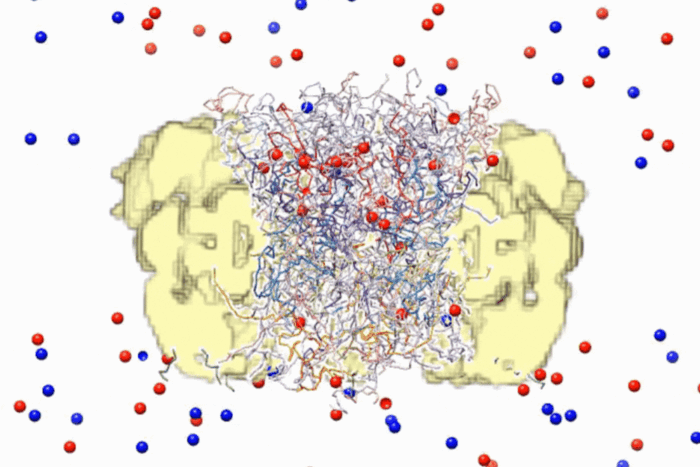New gene-slicing method targets specific areas of the brain
To understand the role any one gene plays in an organism, scientists rely on knockout mice: They breed a mouse that lacks the gene they are interested in, then observe the effects. It doesn’t always work. Removing a gene from an entire mouse can create many problems, including killing the mouse before you can figure out what’s wrong with it.
A new method developed by Rockefeller University scientists Sergei Musatov, Michael Kaplitt and Donald Pfaff, in collaboration with scientists at the University of Tsukuba in Japan, offers a faster and more effective way to study the effects of genes. The method, which uses a virus to deliver small bits of genetic material into the brain of a living mouse, gives results in a fraction of the time it takes to breed a knockout animal and even allows scientists to target specific areas of the brain. After testing the method with a gene linked to an estrogen receptor — estrogen receptor alpha — Musatov and his colleagues confirm that the method is effective, and suggest it could someday be used to deliver genetic therapies.
The new method uses an adeno-associated virus, a tiny virus that incorporates its genetic material directly into the genome of the host organism it infects. It also relies on small interfering RNAs 20 to 25 nucleotides in length that block the activity of a particular gene. By micro-injecting the nerve cell group with the virus, the researchers deliver snippets of RNA that silence a specific gene of interest.
Using the small interfering RNAs, Pfaff and his colleagues silenced the gene for estrogen receptor alpha, but only in a specific area of the brain, called the ventromedial hypothalamic nucleus. Estrogen receptor alpha plays a major role in regulating the sexual behavior of female mice. After injecting the virus, Musatov, the paper’s lead author, saw that the female mice no longer displayed any receptive behavior to male mice and, in fact, became very aggressive in their rejection of them.
The estrogen receptor alpha gene had been removed from mice before, but scientists later found that a truncated form of the protein was still made. “It was unclear if the effects in the estrogen receptor knockout mouse were due to the absence of the protein in the mature neurons, from the lack of the receptor during the development of the mice, or due to genetic compensation,” says Pfaff. The new experiment confirms that the gene is required for normal sexual behavior.
“This new method of gene suppression will greatly facilitate studies aimed at identifying genes and neuronal networks involved in complex brain functions,” says Pfaff. “It may also lead to the design of novel therapies for disease in which gene silencing is a desirable outcome.”
Proceedings of the National Academy of Sciences 103(27): 10456-10460 (July 5, 2006)(opens in new window)


